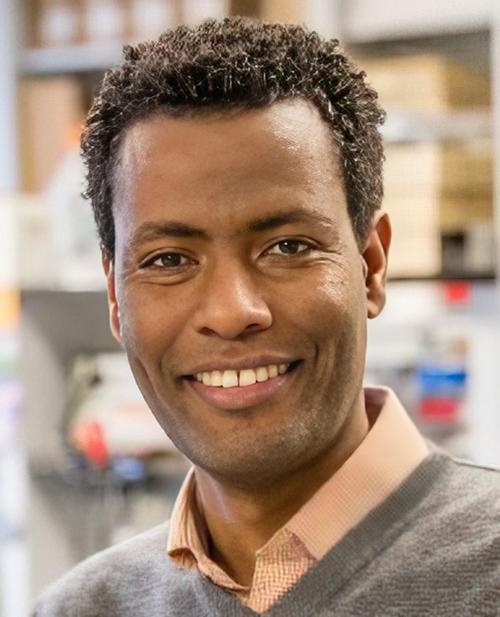Findings could lead to new clinical laboratory involvement in diagnostics targeted at overweight patients
Does the SARS-CoV-2 coronavirus make us fat so it can better take over our bodies? It sounds like the plot for a science fiction horror movie! But a team of scientists in the Pacific Northwest say that is exactly what the virus does, and their findings could lead to clinical laboratories playing a role in evaluating how the virus highjacks fat cells to aid in its invasion of humans.
Researchers at Oregon Health and Science University (OHSU) and the Department of Energy’s Pacific Northwest National Laboratory (PNNL) found that the coronavirus commandeers the body’s fat processing system to amass cellular storehouses of fat that enable it to take over a body’s molecular function and cause disease.
They found that certain types of lipids support replication of the COVID-19 virus. Their study illustrates how lipids may play a more important role in the human body than scientists previously understood.
The scientists published their findings in the journal Nature Communications, titled, “A Global Lipid Map Reveals Host Dependency Factors Conserved Across SARS-CoV-2 Variants.”

“This is exciting work, but it’s the start of a very long journey,” said Fikadu Tafesse, PhD (left), Assistant Professor of Molecular Microbiology and Immunology, OHSU School of Medicine and corresponding author of the study in an OHSU press release. “We have an interesting observation, but we have a lot more to learn about the mechanisms of this disease.” Clinical laboratories may eventually be part of a new diagnostic process for overweight COVID-19 patients. (Photo copyright: Oregon Health and Science University.)
Does Obesity Promote COVID-19 Infection?
The OHSU and PNNL scientists performed their research by examining the effect of SARS-CoV-2 on more than 400 lipids in two different cell lines. They observed that individuals with a high body mass index (BMI) appear to be more sensitive to the COVID-19 virus.
The researchers discovered there is a tremendous shift in lipid levels in those cell lines when the virus was present, with some fats increasing by a massive 64 times! Nearly 80% of the fats in one cell line were changed by the virus and more than half of the fats were altered in the other cell line.
The lipids that were most affected by the COVID-19 virus were triglycerides which are critical to human health. Triglycerides are basically tiny bundles of fat that allow the body to store energy and maintain healthy cell membranes. When a body needs energy, these fat parcels are broken up into useful, raw materials to provide the required energy.
“Lipids are an important part of every cell. They literally hold us together by keeping our cells intact, and they’re a major source of energy storage for our bodies,” said Jennifer Kyle, PhD, in the OHSU press release. Kyle is a research scientist at PNNL who specializes in all stages of lipidomic research. “They are an attractive target for a virus,” she noted.
Stopping SARS-CoV-2 Replication
The scientists discovered that SARS-CoV-2 alters our fat-processing system by boosting the number of triglycerides in our cells and changing the body’s ability to utilize stored fat as fuel. The team also analyzed the effects of lipid levels in 24 of the virus’ 29 proteins. They identified several proteins that had a strong influence on triglyceride levels.
The team then searched databases and identified several compounds that interfered with the body’s fat-processing system by cutting off the flow of fatty fuel. They found that several of these compounds were successful at stopping the SARS-CoV-2 virus from replicating.
A synthetic organic compound known as GSK2194069, which selectively and potently inhibits fatty acid synthase (FAS), and a weight-loss medication called Orlistat, were both able to stop viral replication in the lab.
Although the scientists believe their work is an important step in understanding the SARS-CoV-2 coronavirus, they also note that their results occurred in cell culture (in vitro) and not in people (in vivo). Therefore, more research is needed to determine if the compounds will work in the same manner in human trials.
“As the virus replicates, it needs a continuous supply of energy. More triglycerides could provide that energy in the form of fatty acids. But we don’t know exactly how the virus uses these lipids to its advantage,” Tafesse said in the press release.
“Our findings fill an important gap in our understanding of host dependency factors of coronavirus infection. … In light of the evolving nature of SARS-CoV-2, it is critical that we understand the basic biology of its life cycle in order to illuminate additional avenues for protection and therapy against this global pandemic pathogen, which spreads quickly and mutates with ease,” the OHSU/PNNL scientists wrote in Nature Communications.
More research is needed to validate the findings of this study and to better understand the dynamic between lipids and SARS-CoV-2 infection. However, it is reasonable to assume that, in the future, some COVID-19 patients may require a clinical laboratory work-up to determine how the coronavirus may be hijacking their fat cells to exacerbate the illness.
—JP Schlingman
Related Information:
COVID-19 Fattens Up Our Body’s Cells to Fuel Its Viral Takeover
A Global Lipid Map Reveals Host Dependency Factors Conserved Across SARS-CoV-2 Variants



